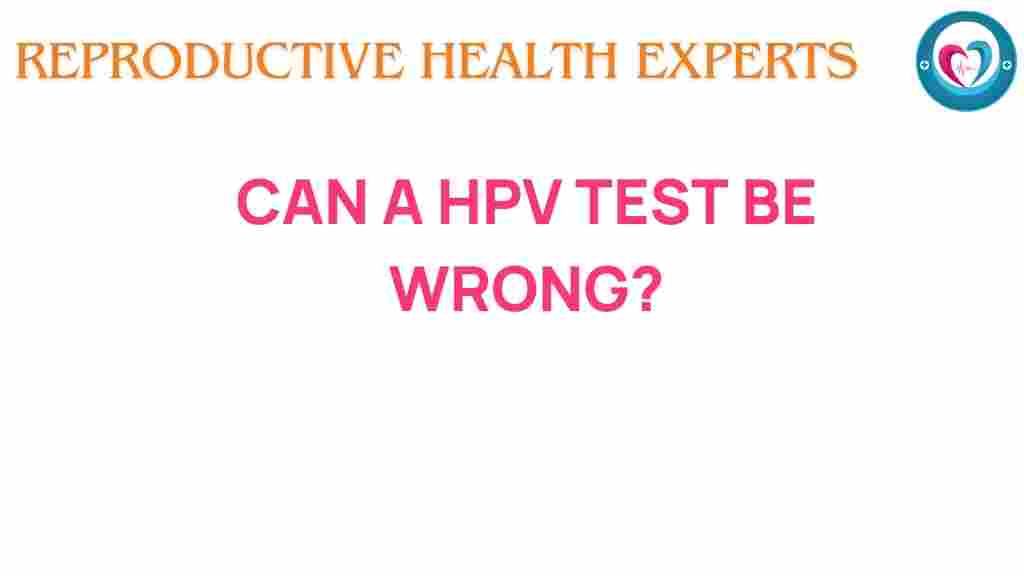Unraveling the Mystery: Can a HPV Test Be Wrong?
Human Papillomavirus (HPV) testing is an essential part of women’s health diagnostics, particularly in the context of cervical cancer screening. With millions of women undergoing HPV tests each year, questions often arise regarding the accuracy of these tests and the implications of false negatives and false positives. In this article, we will delve into the accuracy of HPV tests, explore the potential for incorrect results, and discuss what this means for health and screening procedures.
Understanding HPV and Its Impact on Women’s Health
HPV is a common sexually transmitted infection that can lead to various health issues, including cervical cancer. There are over 100 types of HPV, but only a few are classified as high-risk types that can cause cancer. Regular screening through HPV tests is crucial in detecting these high-risk types early, allowing for timely intervention and reducing the risk of cervical cancer.
The HPV Test: How Accurate Is It?
The accuracy of the HPV test is paramount when it comes to diagnosing infections and assessing the risk of cervical cancer. The HPV test primarily checks for the presence of high-risk HPV types. Here are some key points regarding its accuracy:
- High Sensitivity: HPV tests have a high sensitivity rate, which means they are effective in detecting the presence of the virus when it is there.
- Specificity: While sensitivity is crucial, specificity—how well the test identifies those without the disease—is also important in reducing false positives.
- Combination with Pap Smears: HPV tests are often used in conjunction with Pap smears for more comprehensive cervical cancer screening.
False Negatives: What They Mean for You
A false negative occurs when a test result indicates that HPV is not present, but in reality, it is. The implications of a false negative can be serious:
- Missed Diagnosis: A false negative can lead to a missed diagnosis of HPV, leaving a woman unaware of her risk for developing cervical cancer.
- Delayed Treatment: Without the proper diagnosis, necessary follow-up screenings or treatments may be delayed, increasing the risk of cancer progression.
- Psychological Impact: A false sense of security can lead to complacency regarding health and screening practices.
False Positives: Understanding the Risks
Conversely, a false positive occurs when the HPV test indicates that high-risk HPV is present when it is not. This can lead to unnecessary anxiety and medical procedures:
- Unneeded Follow-Up: A false positive can trigger additional tests, such as biopsies, which may be invasive and stressful.
- Emotional Distress: Receiving a false positive result can cause significant emotional distress, anxiety, and confusion regarding one’s health.
- Healthcare Costs: The financial burden of unnecessary follow-ups can be substantial, affecting overall health care access.
Factors Influencing the Accuracy of HPV Tests
Several factors can affect the accuracy of HPV tests, leading to false negatives or false positives:
- Sample Collection: Improper sample collection can lead to inaccurate results. Ensuring a qualified professional performs the test is essential.
- Laboratory Techniques: Variability in laboratory methods and technologies can impact test results. High-quality laboratories should be used for testing.
- Timing of the Test: The timing of the test in relation to sexual activity or menstrual cycles can influence results. It’s advised to follow medical guidelines regarding when to test.
Step-by-Step Process of HPV Testing
Understanding the HPV testing process can help alleviate concerns regarding its accuracy:
- Consultation: Schedule an appointment with your healthcare provider for a discussion about HPV testing and its importance.
- Sample Collection: A healthcare professional will collect a sample during a pelvic exam, typically using a swab.
- Laboratory Analysis: The sample is sent to a laboratory for analysis to determine the presence of high-risk HPV types.
- Results Interpretation: Your healthcare provider will interpret the results and discuss them with you, regardless of whether they are positive or negative.
- Follow-Up: Based on the results, follow-up testing or treatment may be recommended.
Troubleshooting Tips for HPV Test Concerns
If you have concerns about the accuracy of your HPV test results, consider the following tips:
- Seek Clarification: Don’t hesitate to ask your healthcare provider for clarification on your results and what they mean for your health.
- Request Repeat Testing: If you have doubts about your results, you can discuss the option of repeat testing with your provider.
- Stay Informed: Educate yourself on HPV and cervical cancer through reputable sources, such as the American Cancer Society.
- Maintain Regular Screenings: Regular HPV screenings are crucial, especially if you have a history of abnormal results.
Conclusion: The Importance of Accurate HPV Testing
In conclusion, while HPV tests are generally accurate, the potential for false negatives and false positives exists. Understanding these possibilities is crucial for women’s health and cervical cancer screening. Regular screenings, informed discussions with healthcare providers, and awareness of HPV testing processes can significantly mitigate the risks associated with inaccurate test results.
By staying proactive in health management and maintaining open lines of communication with healthcare professionals, women can navigate the complexities of HPV testing with confidence. Remember, early detection is key to preventing cervical cancer, and accurate HPV tests play a vital role in this journey.
For more information on women’s health and HPV testing, consider visiting this resource.
This article is in the category Conditions and created by ReproductiveHealthExperts Team
